The Echo of Sliding Glass and Neon
Built on the border between Lopatcong and Pohatcong, the Phillipsburg Mall opened in September 1989, with Sears, Hess's, and Kmart pulling in early crowds.
Over 7,000 people came that day. Traffic backed up nearly a mile in both directions.
For a generation growing up in Warren County, it was the largest public space in reach. On Sundays, the food court buzzed. On Fridays, the parking lot became a hangout.
As one of the few regional indoor shopping centers on the eastern edge of the Lehigh Valley, it held a quiet weight in local memory.
Today, those glass doors are gone, and the site no longer draws visitors, but for many in Phillipsburg, New Jersey, it still marks a familiar spot on the map.
Development Delays and the Push to Open
Crown American announced its plans for the Phillipsburg Mall in 1985.
At the time, retail optimism stretched along the Route 22 corridor, and anchor stores like Bradlees, Sears, and Hess's were positioned to draw both Warren County locals and Lehigh Valley spillover.
Bradlees later dropped out due to closures across the chain, and the space was reassigned to Kmart.
The mall was supposed to open in 1987, but infrastructure delays, including problems tied to highway access and sewage installation, pushed the opening back.
By the time the project neared completion in 1989, it had been reshaped in both size and strategy. Crown American used the delay to line up additional tenants and finish interior outfitting.
On opening day, September 24, 1989, three anchors were in place: Sears, Kmart, and Hess's, the latter making its first and only move into New Jersey.
Over 7,000 people visited on day one, and Hess's had to skip its ribbon-cutting ceremony due to the 2,000-3,000 crowd.
The mall opened with 90 smaller stores, with more leasing in progress. The public response was strong enough to affirm that the delay hadn't dampened interest.
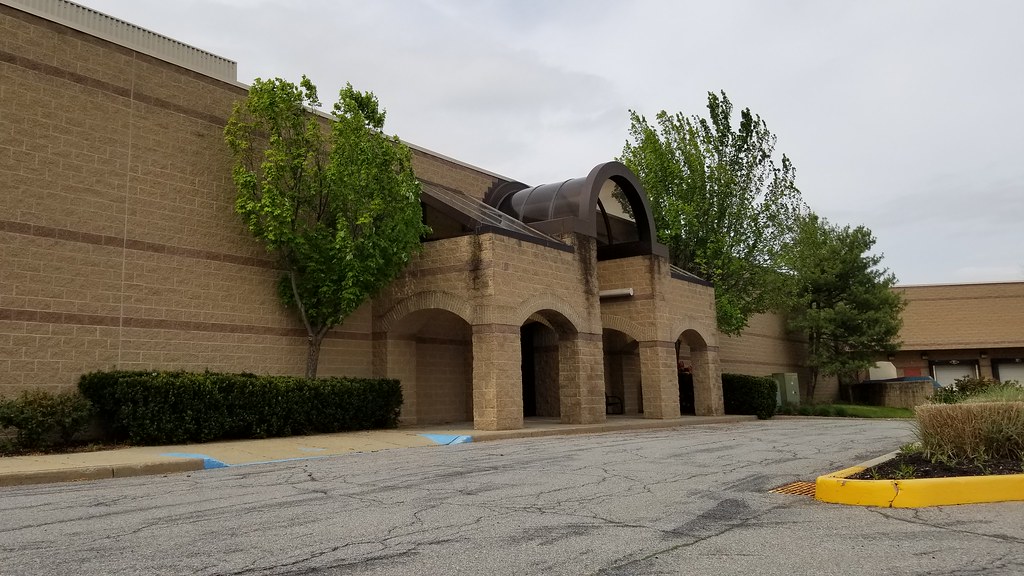
Anchor Turnover and Steady Repositioning
After its strong debut, the Phillipsburg Mall saw regular foot traffic throughout the early 1990s. JCPenney joined the lineup in March 1990, marking a fourth major anchor.
The space helped round out a retail mix that already leaned toward mainstream department store draw.
When Hess's closed in 1994, its location was taken over by The Bon-Ton, which continued operating in that space for over two decades.
The early 2000s brought sharper shifts. Kmart closed its Phillipsburg Mall location in 2002 as part of a national bankruptcy restructuring.
That same year, its space was sold to Kohl's, which opened in April 2004. Unlike some of its predecessors, Kohl's would remain open even as the rest of the mall changed around it.
Smaller tenants also adjusted during this period, but the anchor transitions carried the most weight. They shaped leasing interests and influenced customer routines.
Though the closures were spread out, they marked a gradual unraveling of the original retail structure.
By 2004, only Sears remained from the original trio. The others had rotated through at least one successor, and JCPenney had already weathered a decade of national shifts in department store strategy.
Abandoned Renovations and Ownership Changes
In 2003, the Pennsylvania Real Estate Investment Trust (PREIT) acquired the Crown American mall portfolio. Phillipsburg Mall was part of that deal.
Soon after, PREIT worked with CREATE Architecture to draft plans for a renovation. Renderings proposed a more modern look, likely aimed at attracting younger shoppers or national brands.
But those plans stalled. The project was never approved or funded, and the proposed updates faded without announcement.
By 2013, PREIT sold Phillipsburg Mall to Mason Asset Management and Namdar Realty Group for $11.5 million.
The sale price reflected diminished value in the regional retail landscape. Around the same time, national trends had begun pushing many mid-tier malls into steep decline.
In January 2014, JCPenney announced it would close 33 stores across the country. Phillipsburg Mall made that list. The location closed later that year.
It marked the loss of a long-standing anchor and deepened the gap in tenant balance. Smaller chains and locally owned shops also began to leave around 2013 and 2014, mirroring retail shifts happening well beyond Warren County.
Leasing slowed, vacancy rose, and the mall began to lose the stability it once had through its anchor stores.
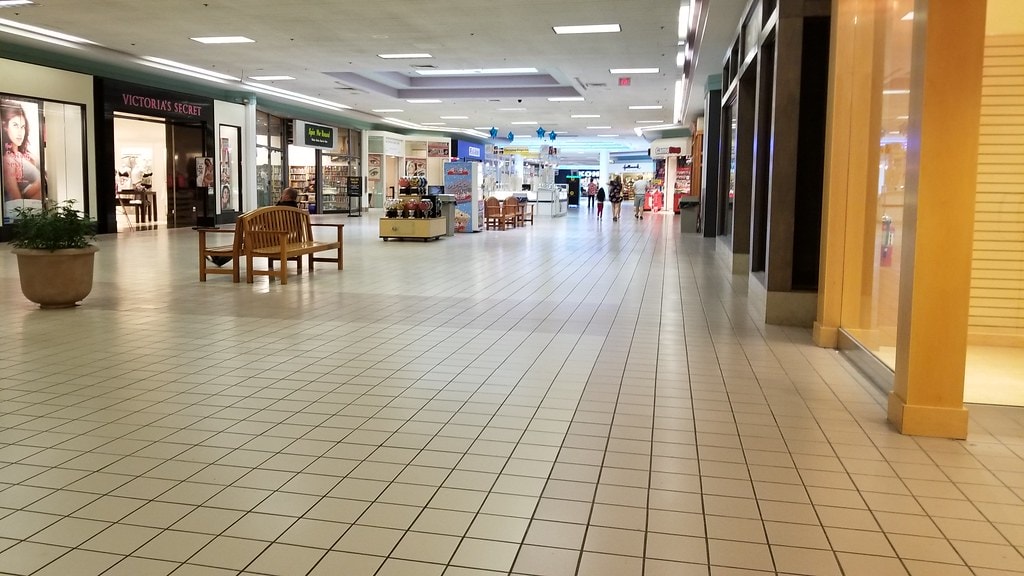
Small Business Fill-Ins and Final Anchor Losses
After JCPenney closed in 2014, the space sat empty for a while. By January 1, 2017, Black Rose Antiques & Collectibles opened in that same anchor footprint.
The store pulled in shoppers with vintage stock and wide aisles, drawing from antique circuits beyond Warren County.
Nearby, Spin Me Round Records opened close to the same corridor, adding a niche vinyl selection to the mall's increasingly independent roster.
Even with these arrivals, the mall's largest retailers continued to exit. On November 2, 2017, Sears Holdings announced that Phillipsburg's Sears would close.
The store was part of a larger round of 63 national closures. That location shut down on January 28, 2018.
The Bon-Ton followed. Facing roughly $1.1 billion in debt, the chain announced in late 2017 it would close more than 40 stores.
Phillipsburg Mall was included. By January 31, 2018, Bon-Ton confirmed its shutdown, with clearance sales starting February 1.
The store officially closed on April 29.
These closures left Kohl's as the last of the full-size national anchors still operating. By the end of 2018, only a handful of smaller tenants remained.
The balance had tipped from national retail to scattered independents, with vacancies becoming harder to fill.
Collapse, Demolition, and Shrinking Borders
In August 2018, heavy rain caused an estimated 200-square-foot section of the former Sears roof to collapse. The damage forced safety barriers into place and prompted several stores to shift toward the Kohl's end of the Phillipsburg Mall.
That part of the building, once the most trafficked anchor area, was walled off and remained out of use.
A month later, in September 2018, Old Navy vacated its store and moved operations to a nearby shopping center down the road.
The original store had opened around 2000 and had stayed relatively stable during earlier tenant shifts. Its departure marked another national name exiting the property.
The response moved from temporary closures to full-scale demolition. In August 2019, the former Sears building was torn down.
The Bon-Ton space followed in October 2019. These demolitions haven't affected the main concourse yet, but they have changed the shape of the footprint.
Key wings disappeared from the floor plan, and empty corridors near those anchor spaces lost their draw.
At that point, while the property hadn't closed entirely, the center no longer functioned as a complete mall.
Key entry points vanished, and much of the interior retail section lacked either visibility or traffic. Mall operations narrowed to a small cluster near Kohl's.
Final Notices and Full Closure
By the end of 2019, the remaining tenants were given formal notice to leave. On December 23, lease termination letters were issued, giving businesses 30 days to vacate.
No public event or farewell marked the mall's closure. It happened quietly, in winter, with most storefronts already dark.
The few that remained closed in early 2020, clearing out inventory and shelving.
In January 2020, Black Rose Antiques announced it would shut down operations by March. The store had been the largest tenant still open inside the Phillipsburg Mall.
The exit pulled down whatever foot traffic remained. The following month, Kohl's clarified its status.
Because its building was separately owned, the company confirmed it would continue operating. The store remained open, even as demolition discussions picked up again.
As of July 2020, the interior mall was fully shuttered. Security patrols increased. Entry points were sealed. There were no further leasing efforts.
The parking lot, once used for overflow retail and weekend traffic, sat empty most days. No new construction had started, but ownership groups were already floating redevelopment.
Discussions about the land had shifted away from retail entirely. The building was no longer seen as a place to repopulate but as one to replace.
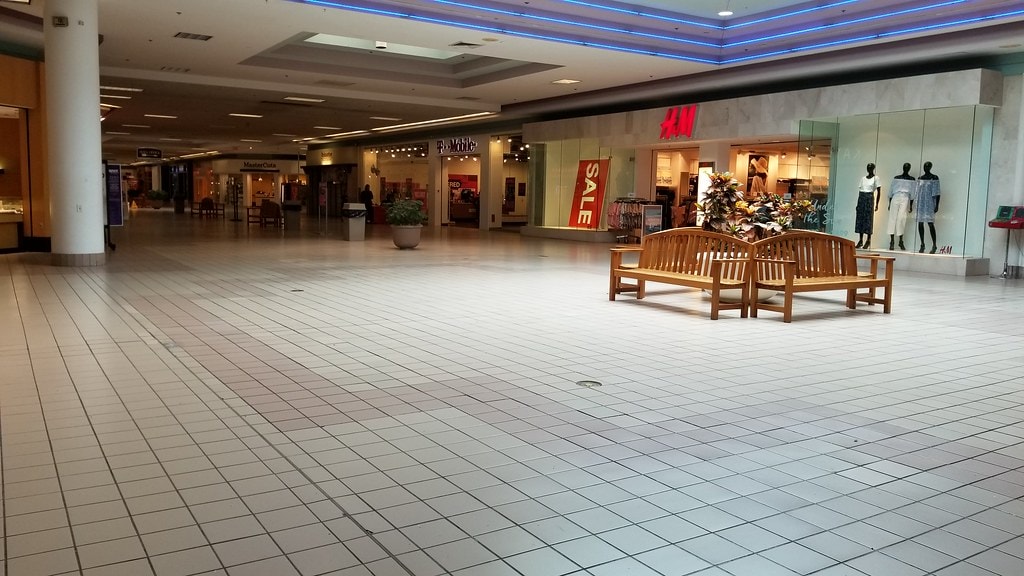
Final Demolition and Warehouse Redevelopment
On January 29, 2021, Mason Asset Management issued a public notice that the Phillipsburg Mall would be demolished in the coming weeks.
The plan was to clear the site for a proposed 852,000-square-foot warehouse. That timeline stretched, however. Demolition didn't begin until February 2024.
Crews worked in phases, clearing out the last of the common areas and support structures. By July 2024, all remaining buildings were gone.
In the months after, redevelopment interest turned formal. In August 2024, Mason Asset and J.G. Petrucci Co. submitted a Highlands Redevelopment Area application.
The plan included two separate warehouse buildings - one measuring roughly 833,000 square feet and another around 367,000 square feet.
The sites spanned both Lopatcong and Pohatcong townships, overlapping parts of the former Phillipsburg Mall footprint and surrounding tracts.
On September 19, 2024, the Highlands Council held a public hearing to review the redevelopment application.
Kohl's still operates on an outparcel, but nothing else retail-related remains. The use of the land had shifted entirely. Phillipsburg Mall no longer exists in physical form; it is only a set of parcels filed for warehousing.
🍀

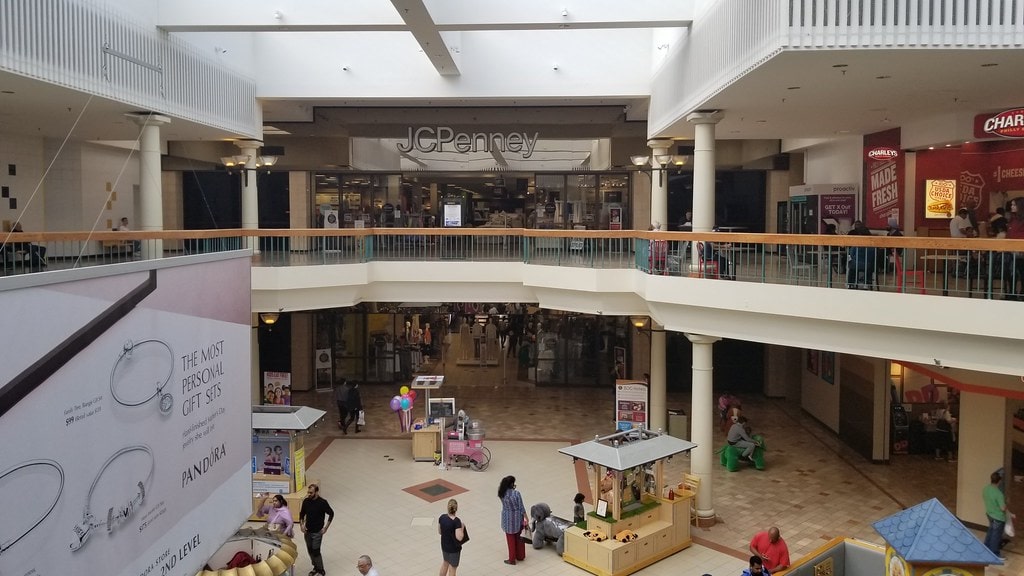
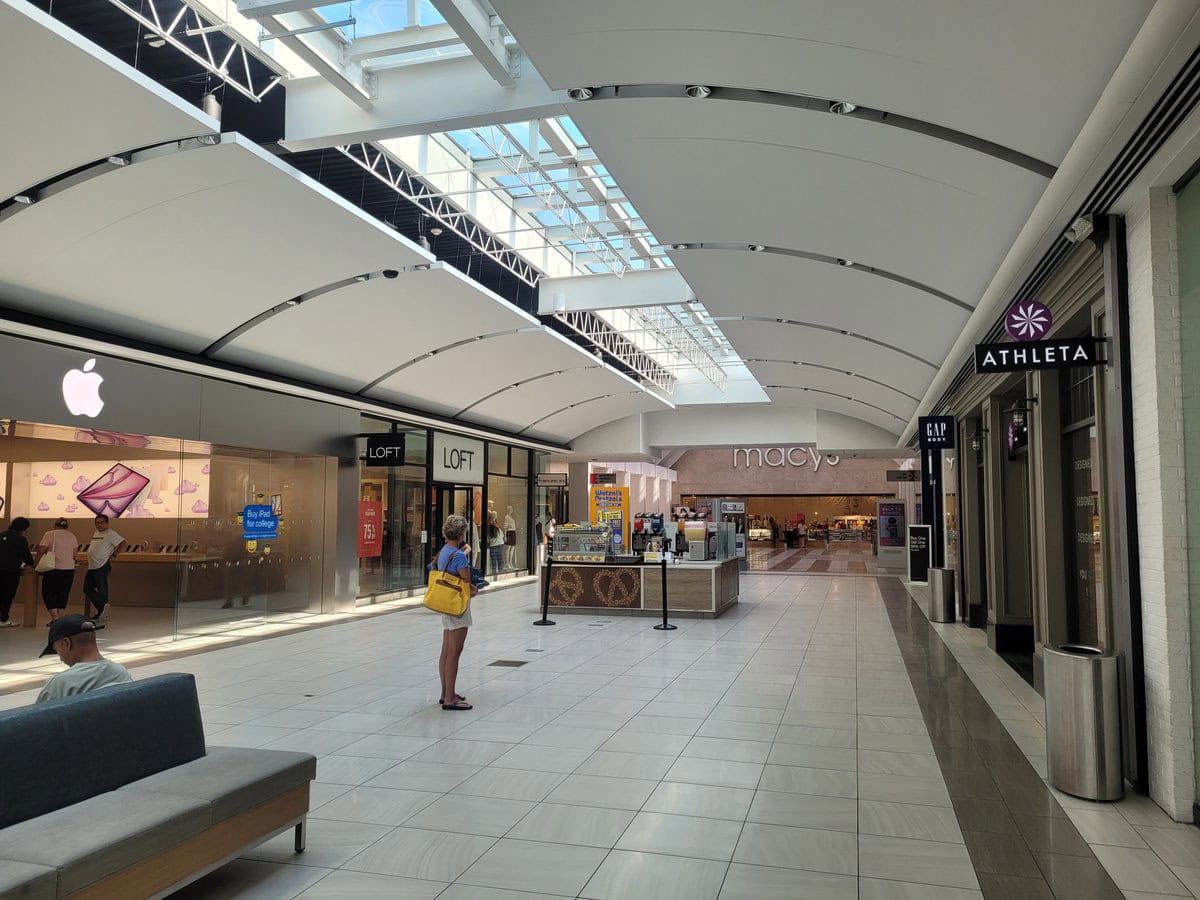
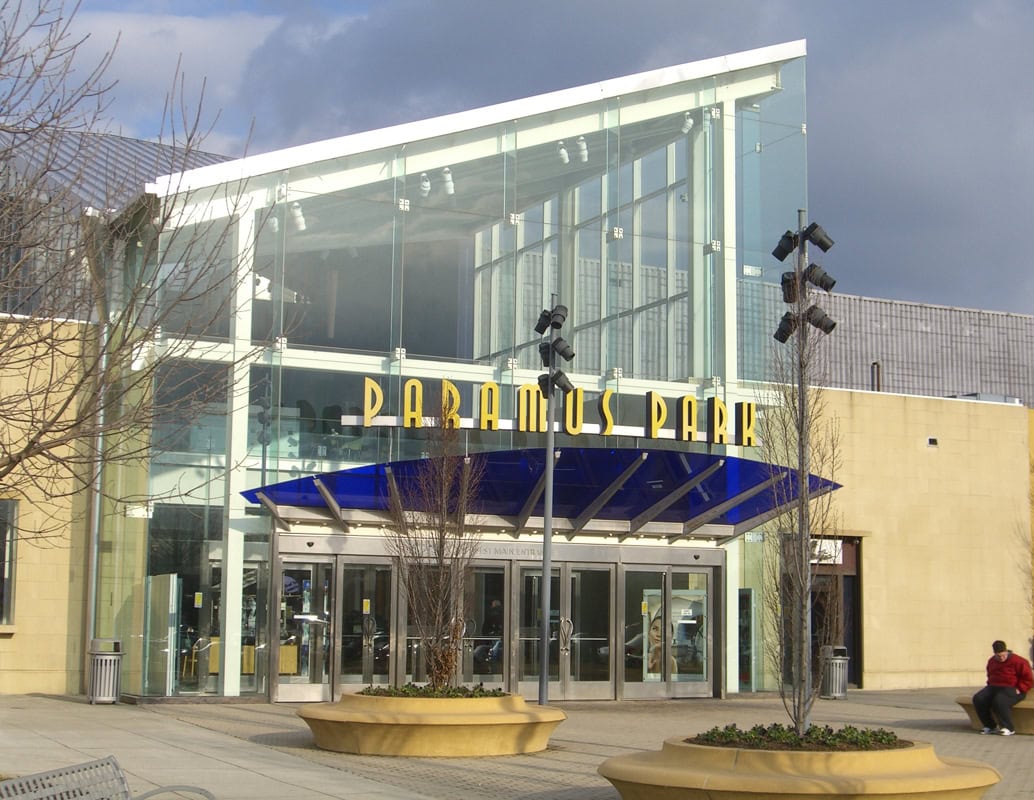


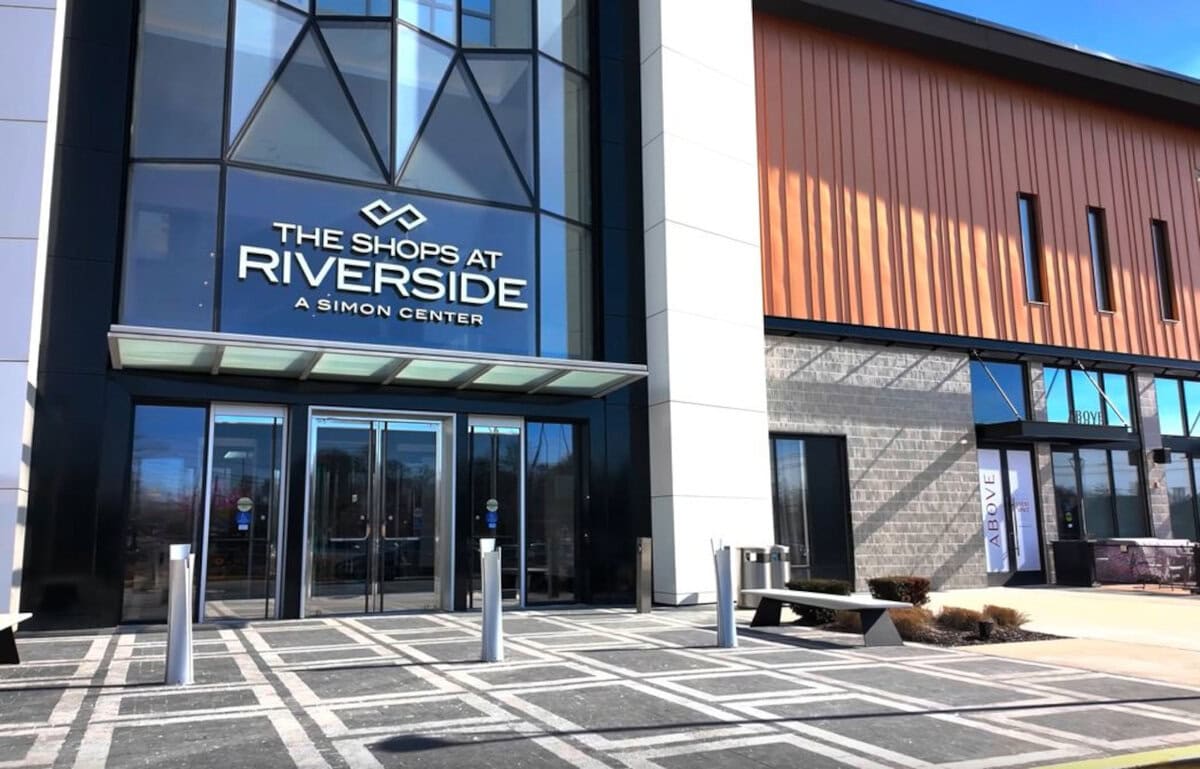
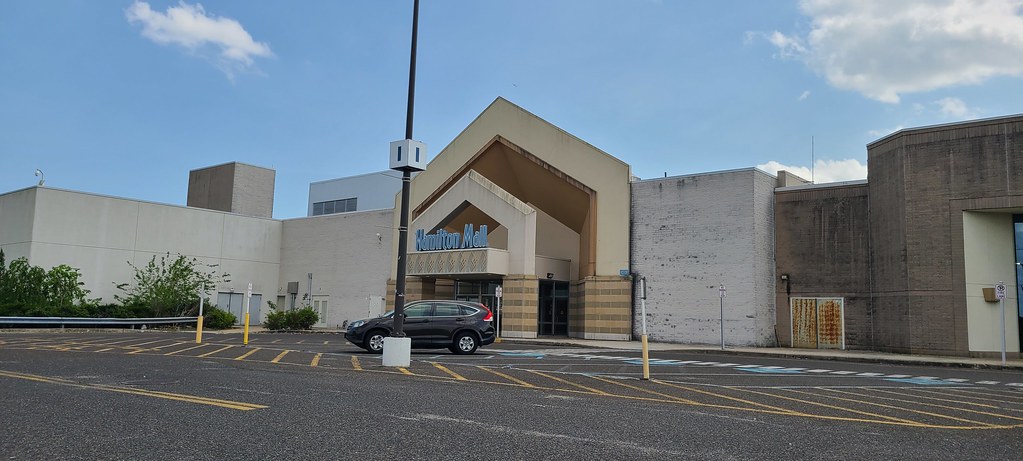
Pburg is poor and will never have anything nice to go like an upscale mall. The local government only sees dollar signs in wanting more warehouses.
Appreciate your thoughts on Phillipsburg. It makes sense to feel frustrated when progress feels slow, but change isn't off the table. Local governments juggle more than most people see: budgets, zoning, infrastructure - all of it shapes what gets built and when.
In response to a prior comment that "Pburg is poor," I can testify that while employed at a jewelry store for ten years at the Philliosburg Mall, it was common to have to request upscaled- priced jewelry for local shoppers. It is sad to be labeled a depressed area. Locals are now forced to travel or shop online.
Thanks for pointing that out about Phillipsburg. Labels don't always match what's really happening on the ground. People there know quality, and plenty are willing to back the businesses that reflect their values and tastes.
In the town of Phillipsburg, yes there are mostly middle class and poor people. But when you get to the outskirts of town, the edges of the town and more to the surrounding countryside, that is where you will find the more affluent middle class to wealthier people.
I have lived in the Easton/Phillipsburg area my whole life. It has drastically changed! Areas that were once farm land or woods are now housing developments or warehouses or retail strip malls or a mix of them. A lot of places that were once vibrant are now closed and gone forever! Like the old Dixie cup plant in Wilson, PA that closed and moved up to Forks Township, but now that is closed. The old Maiers bakery in Wilson, PA. that was bought out by another company kept open for a short time then closed. The property was then sold and the bakery was demolished and the site is now medical offices.
Some things that hurt the Phillipsburg mall were other newer malls opening. Some were smaller strip mall complexes, and some were regular malls. Add to that the e-commerce boom, plus the prices the stores had to charge customers for their products/services, it became uncompetitive.
Sorry for the long post.
Thanks for sharing that perspective. The way Easton and Phillipsburg have changed over the years hasn't been small, and your story makes that real. Landmarks like Phillipsburg Mall didn't just disappear - they were shaped, and eventually undone, by those broader shifts.
The Phillipsburg Mall was a huge part of me growing up. The all day shopping trips with family eating in the food court or just hangout shopping with friends. The Mall as we called it when we were younger was the go to place. Walking from town all the way to The Mall was a super popular thing to do for the teens. I'm sad it's gone so many amazing memories prom dress shopping graduation shopping wedding dress shopping was all done there.
Your memories of the Phillipsburg Mall resonate deeply. It was indeed a central part of the community, where many milestones were celebrated. It's sad to see such places go.
it was a nice place and now it's gone and we don't need no more warehouses it's getting to be a
problem in the city
Malls were already in decline, but selling to Mason Asset (professional slumlords) was the nail in the coffin for the P’burg mall.
It should be noted that the mall property, nor the prime farmland behind it, were never zoned for warehousing. It took a redevelopment plan, passed via ordinance by the councils of Lopatcong and Pohatcong to allow warehousing.
It should also be noted that the Highlands Council never had a public hearing on the P’burg mall itself. Michael Perrucci (of the proposed warehouse disaster on Howard Street in P’burg) wanted to develop the prime farmland behind the mall into another warehouse. But he couldn’t as is because it’s not in a highlands center and as such has no water or sewer service.
In order to get water and sewer, the Highlands Council developed a scheme to combine the prime farmland in Lopatcong with the P’burg mall property in both Lopatcong and Pohatcong so they could claim the prime farmland consists of 80% impervious surface, allowing it to be considered a redevelopment area.
The councils of Lopatcong, Pohatcong, as well as the Highlands Council failed local residents by allowing these properties to be developed into warehouse to appease greedy developers while inundating the area with warehouses.
Thanks for posting this. You've highlighted something that often gets lost behind vague terms like "redevelopment." The combination of parcels, public hearing, and the shift in water and sewer eligibility - those are decisions with long-lasting consequences.
Phillipsburg Mall was indeed a shopping venue the community embraced when built. It didn't matter it was built in Phillipsburg, NJ, the local community and customers of the surrounding vicinity saw a true purpose. One could argue an easy access to the mall from one side of Rte 22 was a big deal. However, truth is the consumer interests slowly moved away from a physical retail store to on-line research and purchases. Malls generally never saw the long term affects of the consumer shift in the shopping experience. One might argue that the Phillipsburg Mall needed to do this or that or improve the look, etc., etc. Just like Kmart never saw Walmart coming down the retail tracks at a high speed that would eventually crush Kmart into closing, so to did Malls go to the wasteside. Consumers eventually lost interest in the Mall experience, especially if it meant locating products else where at lower prices and delivered to ones door. Life moves on for no one overtime. At my age, I am grateful to the Phillipsburg Mall and all the memories I have of the interior structure, the shoppers and to the shopping experiences of it's time. Strangely, the memories of the Phillipsburg Mall don't elicit for me a negative connotation of the Mall or town in which it was built. No, I thank each and everyone that had something to do with the Phillipsburg Mall from beginning to end for the wonderful memories of that aspect of retail we continue to lose around the U.S.A.
That was beautifully said. Your comment reads like someone closing the cover of a well-read book. The ending is sad, yes, but there's warmth in how much the middle mattered.
The last thing this area needs is more warehouses which will sit empty
destroy our country side and increase truck traffic
Corporate greed takes over
Farm fields disappear
For every plan that promises jobs, there's a quiet erasure of open space and fewer reasons to leave your house on a Saturday.
This is long but I read all the responses and so many of them resonate with me at different times in my life. I understand if you bag out.
The OP showed up in my email at the end of June. I couldn't look at it til now.
The P'burg Mall is part of my history. I was born in Bethlehem - through multiple moves ended up in Great Meadows, NJ for over 30 years. Now, I'm temporarily back in P'burg. Yup, that's a 64 year span. I had a daughter and through all of it...
Phillipsburg Mall was part of my history - for me and with her. For me - Hess's - Allentown, then Westgate Mall, then P'burg!
I took my girl to Old Navy - I think there was a BedBath&Bodyworks there. We all went to Boscov's when my dad was alive circa 2008 and even when my mom was alive.
I see the ruins of the mall every day. I am so happy Kohl's is there. And when it became Kohl's w/Sephora I figured this could actually stay. Actually a smart business move.
SO MANY PEOPLE VOICE THAT THERE COULD BE A TRADER JOE'S OR A WEGMAN'S. When I google - it seems that Phillipsburg does not fit whatever the criteria is for development.
ShopRite has a monopoly on this area. It is the only game in town/the alternative is I would have to pay the tolls to shop in Easton-yeah, there's a Wegman's there.
But I have to PLAN when to go to ShopRite - it is an event and never a pleasant one. I map out what days and times are not as horrifying.
The reality is, there are enough people in this area and the surrounding areas-this is not Phillipsburg only! (I am moving because there isn't enough here) who are 'affluent enough' meaning 'at least' 15 mile radius - to patronize either of these 2 establishments.
Trader Joe's has major MAJOR items that are desirable and AFFORDABLE on so many levels. I have patronized Wegman's since I lived in NY, then Bethlehem-maybe they want no competition but people have a preference.
If either of these establishments invested in this area (and I guess it's long gone in any way possible) I'D BE THERE IN A SECOND!
Back to the Phillipsburg Mall. History is so important - there is no heart emoji for me to post.
Thank you for writing this out. I feel every line of this. It's rare to get such a full life story tied to one mall. Malls don't just sell things - they carry memories, routines, and small milestones. Your narrative gives weight to what's often dismissed as "dead real estate."